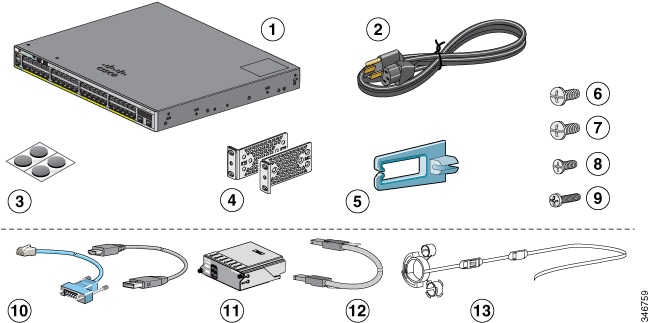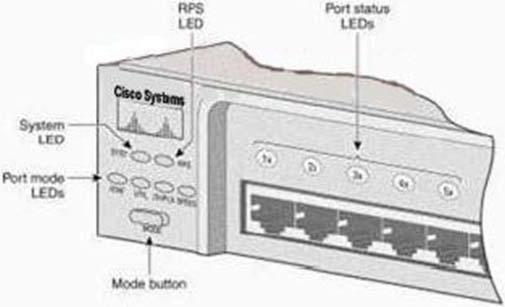
If the LED is amber, the port is blocked to ensure a loop does not exist in the forwarding domain and is not forwarding data (typically, ports will remain in this state for the first 30 seconds after being activated). If the LED is alternating green-amber, there is a link fault. If the LED is blinking green, there is activity and the port is sending or receiving data. If the LED is off, there is no link, or the port was administratively shut down. When selected, the port LEDs will display colors with different meanings.

If the LED is blinking green, the RPS is connected but is unavailable because it is providing power to another device. If the LED is green, the RPS is connected and ready to provide back-up power. If the LED is off, the RPS is off or not properly connected.


The figure shows the switch LEDs and the Mode button for a Cisco Catalyst 2960 switch. Switches of different models and feature sets will have different LEDs and their placement on the front panel of the switch may also vary. You can use the switch LEDs to quickly monitor switch activity and its performance. Cisco Catalyst switches have several status LED indicator lights.


 0 kommentar(er)
0 kommentar(er)
